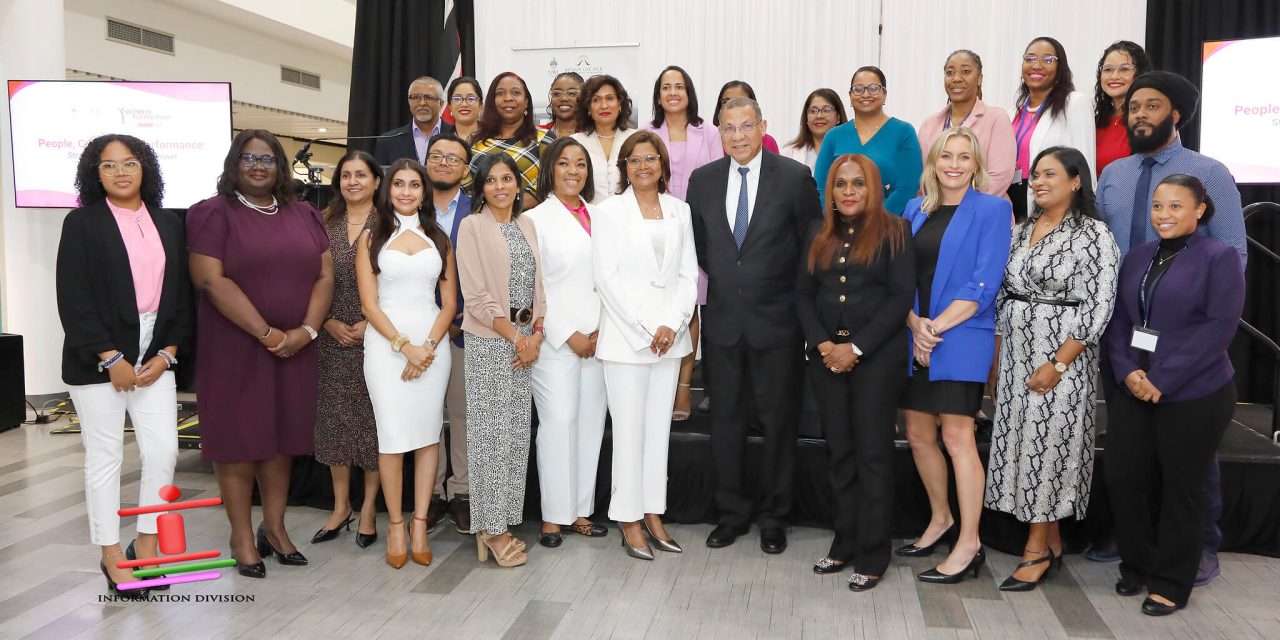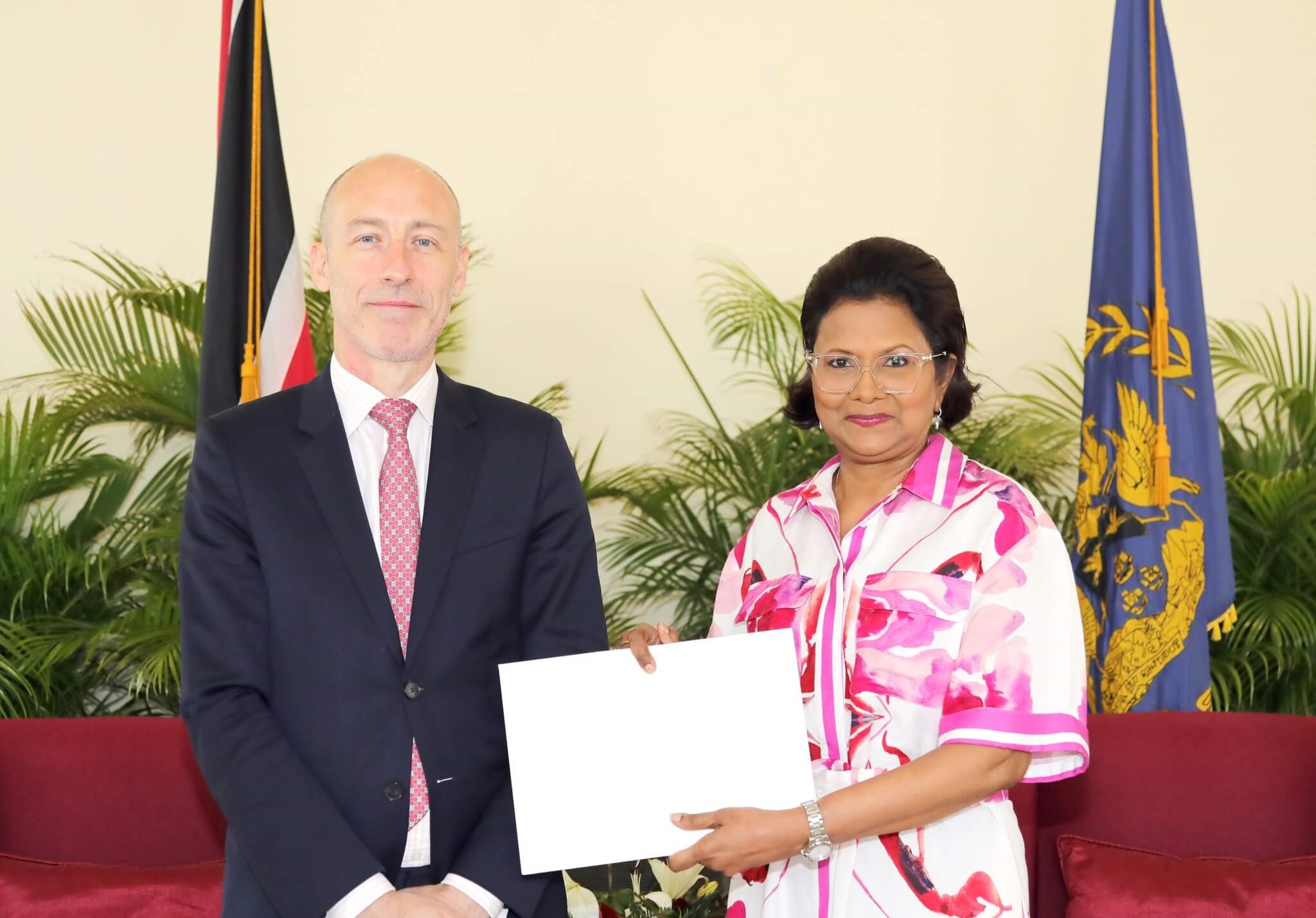It is both an honour and a privilege to address you today, at this 19th instalment of the ‘Women in Leadership’ Conference series. Permit me to begin by thanking the UWI-Arthur Lok Jack Global School of Business for the kind invitation to participate in this important and influential gathering.
The theme of this year’s Conference – “People, Culture and Performance: Strategies for Women in Power” – invites us into a deeper interrogation of the intriguing question of whether, and if so, how does female leadership shape three (3) of the essential pillars of organisational success: People, Culture and Performance.
It is an important and a highly relevant question. Here in the Caribbean, a 2018 ILO report revealed that our region is a world leader in terms of its share of women managers, with 8 out of 11 Caribbean countries surveyed reporting that 40 per cent or more of all managers are women, and Jamaica reporting the highest proportion of women managers in the world at 59 per cent. That was seven (7) years ago. One imagines that the figures are even higher today. All of the evidence suggests that female leadership, in both the private and the public sectors, is here to stay. And, since it is here to stay, the question posed by this year’s Conference theme, therefore cannot sensibly be avoided.
I have described as ‘intriguing’ the question of whether, and if so, how does female leadership shape three (3) of the essential pillars of organisational success. It is intriguing because it immediately gives rise to two, deeper, more fundamental questions, namely:
- First – Does it really matter whether leadership is male or female, or is it simply ‘good leadership’ that counts?; and
- And second: If women do lead differently, what distinct strategies do they bring, in this case, to the domains of people, culture and performance?
Insofar as the first of these two deeper questions is concerned, one might well posit that it is the quality of the leader that matters, and not his or her gender. Good or poor leadership, one might argue, whether by women or by men, can make or break any organisation or system. As obvious – and as true – as that argument is, it might still not be the whole of what is true when it comes to leadership. It might be the truth – but is it the whole truth? The fact is that leadership today is less and less about authority and control, and more and more about recognising potential in others and creating the environment in which that potential can flourish. And, a key question for organizations today is, where, as between men and women leaders, are the qualities of this kind of leadership more likely to be found?
This enquiry leads us directly to the second of the deeper questions I posed a moment ago: it is true that women lead differently from their male counterparts? Here again, the data is pointing us to certain inescapable conclusions.
In 2015, UN Women and CADRES surveyed several Caribbean countries to explore public attitudes toward men and women in leadership. While many initially viewed a certain type of male as the ideal leader, most respondents supported greater female leadership, recognising that the qualities women bring are essential to social and economic development. This data aligns with broader research, which consistently shows that women leaders are more likely to adopt collaborative, empathetic and inclusive leadership styles, whereas men may more commonly lean toward authoritative or transactional approaches.
In an article published in Forbes Magazine on March 08, 2022, Sheryl Sandberg, Meta’s Chief Operating Officer at the time, was reported to have said that the wars that ravage so many countries today would not have occurred if women were in charge. During an International Women’s Day event, Ms. Sandberg was reported to have said that “No two countries run by women would ever go to war”. While an admittedly provocative claim, the article suggested that there was at least some support for Ms. Sandberg’s claim – from psychological research on the characteristics of men and women. The article reported that there is substantial evidence that female leaders tend to be more collaborative than their male counterparts, suggesting women would be more likely to work with their neighbouring countries to find peaceful solutions to conflict. Forbes argued that women also tend to be more empathetic, and that their empathy may make them less likely to harm their enemies physically. By contrast, from a young age boys are more physically aggressive than girls and this greater tendency toward aggression may make male leaders more likely to initiate war.
A challenge in defending Ms. Sandberg’s bold claim is, of course, that we cannot ever know if wars would not have occurred had the countries involved been run by women, because none of the countries involved is run by them. Ms. Sandberg’s argument invites us to peer into the imponderable.
Perhaps less imponderable, though, is the public’s recent tremendous outpouring over, and its overwhelmingly positive reaction to the fact that, in our country today, the positions of President, Prime Minister and Leader of the Opposition are all now held by women. The public’s reaction to this development might well be speaking to a belief that women leaders are more likely to demonstrate a greater degree of kindness and empathy than has been shown in the past, and to the expectation that female leadership, at this juncture in our country’s history, might well be exactly what the country needs. It seems to me that our country is at the cusp of finding out whether the premise of Ms. Sandberg’s argument – which is, that female leaders tend to be more collaborative than their male counterparts – an imponderable when it comes to global wars, in fact holds true, when it comes to the way in which our female leaders conduct the domestic affairs of state.
Without trying to be a nay-sayer, I can tell you that there are going to be challenges in delivering on the expectations of the country’s present triumvirate of female leadership. These challenges stem from deep-seated, institutional biases towards women leaders, to which even we women leaders ourselves sometimes inadvertently succumb. In the first place, women are often expected to strike an almost impossible balance – to be strong but nurturing, assertive but likeable, and capable but never intimidating – a balance that is not as rigorously demanded of their male counterparts. These expectations can create inhospitable environments for women in leadership.
Take the case of Great Britain, for example. Last Wednesday, during the Prime Minister’s Questions session in the British Parliament, it became evident that the Chancellor of the Exchequer, Rachel Reeves, was crying as she sat beside the Prime Minister. Ms. Reeves later explained that her tears were the result of a private, personal issue with which she was dealing at the time. Unfortunately for her, they came as the Prime Minister sought to fend off attacks that his year-old government was losing its authority and that he was about to fire Ms. Reeves to regain the initiative. I have to say that I was shocked at the reaction to Ms. Reeves’s show of emotion. The entire financial market was negatively affected and the pound depreciated. More pertinently, however, was the widespread derision from political columnists, mostly male, that Ms. Reeves’s show of emotion provoked. “What is wrong with Rachel Reeves?” the ‘Telegraph’ asked. In an article headlined “The meaning of the Chancellor’s tears”, a ‘New Statesman’ columnist sarcastically told readers that Ms. Reeves’s authority was “beginning to melt away”. The ‘Daily Mail’ spoke disdainfully of her “waterworks”. It was not until a few days later, that an article written in ‘The Guardian’ finally introduced balance into the reportage, by pointing out that when Britain’s former Prime Minister Gordon Brown was reportedly exhausted and under pressure, he was known to be prone to volcanic eruptions. ‘The Guardian’ columnist percipiently remarked that Ms. Reeves’s tears were widely seen as a sign that she was losing control, whereas Mr. Brown’s reported fury was forgiven by many as just a regrettable quirk displayed by a leader under pressure.
In my own journey as President, I have often wondered whether the same double-standards haven’t also been applied to me by political commentators – who, as it happens, are mostly male.
I have made no secret of the fact that in another life, many years ago, I was once an active politician. My own belief is that my past experience as a Member of Parliament and as a member of Cabinet have proved invaluable training ground for my role as President – particularly when it comes to understanding how the system of governance in our country actually works. Yet, time and time again, political commentators – predominantly male so far – have used my long-past political life as a hammer with which to beat upon me and my family.
No amount of facts seem to matter to them – it makes no difference that I had given up active politics for a full seven (7) years before I was elected President. It makes no difference that, unlike a former distinguished President, who just so happened to be male, I did not move from being a Cabinet Minsiter one day, directly to being President the next. It makes no difference that, in any event, our Constitution specifically contemplates a sitting Member of Parliament becoming President. It makes no difference that, for the last 63 years, ever since Independence, commentators have invariably referred to the Senators appointed by me in accordance with the Constitution as “Independent Senators” – yet suddenly, for the first time in our history, they now refer to them as “the President’s Senators”.
None of what is factual seems to actually matter – the attacks upon my long dead-and-buried political career have continued.
I have sometimes allowed myself to wonder whether the difference in my case is that I am one of only two (2) women to have been President – and whether the reason that the only other former politician to have become President was spared the attacks that have been visited upon me, is that he was male. I suppose I could be wrong in so wondering – and that I might even be inviting an avalanche of female commentary to now be made to the same effect. But the facts are the facts. And I have wondered whether, having put down the mantle of politics for far, far longer than that other male President had, before he assumed the office, it is too much to ask that, like him, I simply be judged by my performance in the office?
I mentioned earlier, deep-seated biases towards women leaders, to which I suggested that even we women leaders ourselves sometimes inadvertently succumb. I believe that this stems from the fact that, very often, once women are in leadership roles, they can feel that they have to prove their strength in order to further overcome the stereotypes that women are less aggressive and are weak. I realize now, that, in my much younger days in politics, that is how I sometimes felt I needed to behave. In the story on Sheryl Sandberg in Forbes Magazine to which I referred earlier, the columnist argued that, for female heads of state, the selection process may weed out more feminine women, and only allow women with more masculine attributes to advance into these roles. That is, women who behave in a more feminine, collaborative, empathetic manner might be less likely to be elected or appointed to lead their country. Happily for us in Trinidad and Tobago, we have women who have been able to defy those odds. Still, it remains a regrettable feature of the struggle for women’s leadership, that we women are sometimes our own worst enemies.
The short point is, that with all of the advances in women leadership that the data suggests are being made, the intractable problem of inhospitable environments for women in leadership, persists.
One of the more insidious elements in these inhospitable environments, is the plague of misogyny. As Ms. Reeves’ experience in Great Britian shows, misogyny is very much alive and well in today’s workplaces. Here at home, in an article carried in the Newsday Newspaper on June 30, 2025, Ms. Folade Mutota, the Executive Director of The Women’s Institute for Alternative Development (WINAD), warned that [QUOTE] “Misogyny does not sleep. Misogyny employs an adaptive strategy that quiets us and puts us into a false sense of security and accomplishment. You start to see numbers increasing in relation to where the numbers were in the past, and that increase can give some of us a false sense of accomplishment and comfort that misogyny is on the retreat. But it never does. What it is doing is managing your expectations” [END OF QUOTE]. Ms. Mutota warned against women “giving too much space to that adaptive strategy”.
Misogyny affects female leaders on every rung of the ladder. In my former Parliamentary career, it affected me directly in the most vile and disgusting manner, including when memes of me with underwear drawn over my official robes, standing next to a male figure with a contraceptive on his head, were widely circulated on social media. My experience with misogyny is the experience of many women – including women in positions of public leadership today, who have suffered at its hands far more terribly than I have. But it is precisely because it is the experience of so many women that I believe that it is incumbent on the women who now fill the majority of management positions across the region, to lead the battle against it. If, as the evidence suggests, women do lead differently, a distinct strategy that they ought to bring to the world of work, is a strategy to combat misogyny. And if ever we find ourselves committing the error against which Ms. Mutota warns, of giving too much space to misogyny’s adaptive strategy, let us quickly chasten ourselves by recalling the words of Madeleine Albright, the Former US Secretary of State, who, in 2006, declared that – and I quote – “There is a special place in hell for women who don’t help other women”.
To summarize what we have been discussing so far – it seems to me that the data is suggesting that ‘good leadership’ is increasingly likely to be found among the female cohort in the workplace. And it seems to me that the data is suggesting that women do lead differently, and that they can and do bring distinct strategies to the domains of people, culture and performance. On the other hand, it also seems to me that deep-seated, institutional biases towards women continue significantly to impede our progress as leaders. And it seems to me that sadly, we women sometimes inadvertently heap the results of such biases upon our own heads.
And so, the question is, where do we go from here? I do not have all the answers – no one person does. But one thing of which I am certain is that conferences like this, where safe spaces are created for women to gather and discuss honestly the issues that confront them as leaders, are most definitely part of the solution. In my own journey, I have tried to confront the issues that bedevil female leadership by holding on to the belief that one has to do what one feels is right, even when one is criticized for doing so. I have tried to build around me a team that is supportive of my vision and that possesses the right technical and human skills to help bring that vision to reality. That vision is for a softer, more open Presidency. Last week, I was pleasantly surprised to see members of my team who attended a school graduation with me, crying openly and showing emotion at the event. Although I did not pass up the opportunity to tease them about it, I know that they knew that I was immensely proud of them and of the culture of openness and of trust that they have been building among themselves. It should come as no surprise that, in the Office of the President, more than half of our ‘Heads” are women.
There isn’t any doubt that women leadership has come a long way. But there also isn’t any doubt that there is a longer way for us to go, still. To all the women leaders here today, I encourage you to lean in to your own style. There is no need to mimic the aggression and rigidity that were once seen as hallmarks of leadership. Let us instead redefine strength as empathy. Let us champion emotional intelligence as a competitive advantage. Let us continue to support people, influence culture and drive performance.
I hope that as this conference unfolds, both established and emerging leaders will find the tools they need to be able to lead with authenticity and effectiveness, and go on to inspire others to do the same. Most of all, I hope that this conference reminds us that, as Anita Hill put it in her book “Believing: Our Thirty-Year Journey to End Gender Violence”, our progress as women leaders is not a sprint, but a relay race. Ours is the responsibility to pass the baton of each segment in the race that we complete, on to the waiting hands of the next generation of women leaders. May we always pass the baton forward.
I thank you, and wish you all a productive and meaningful conference.








